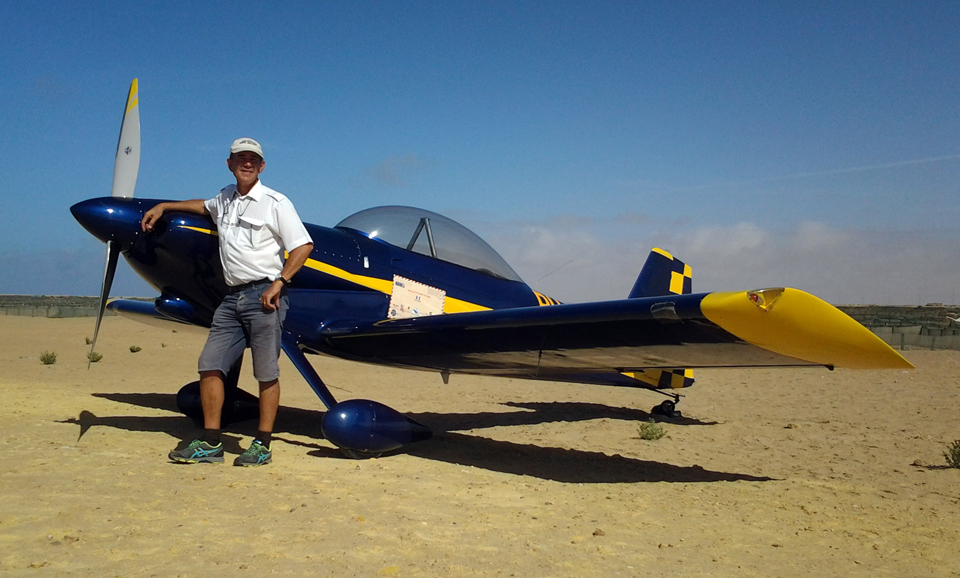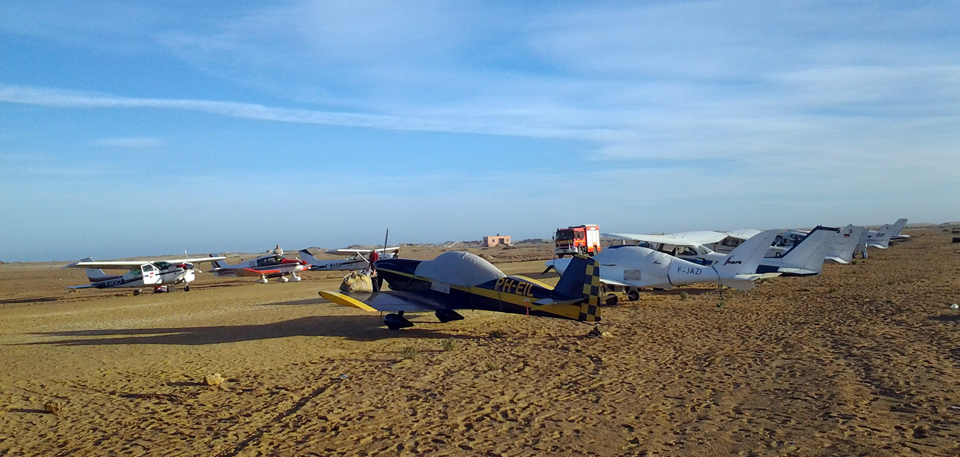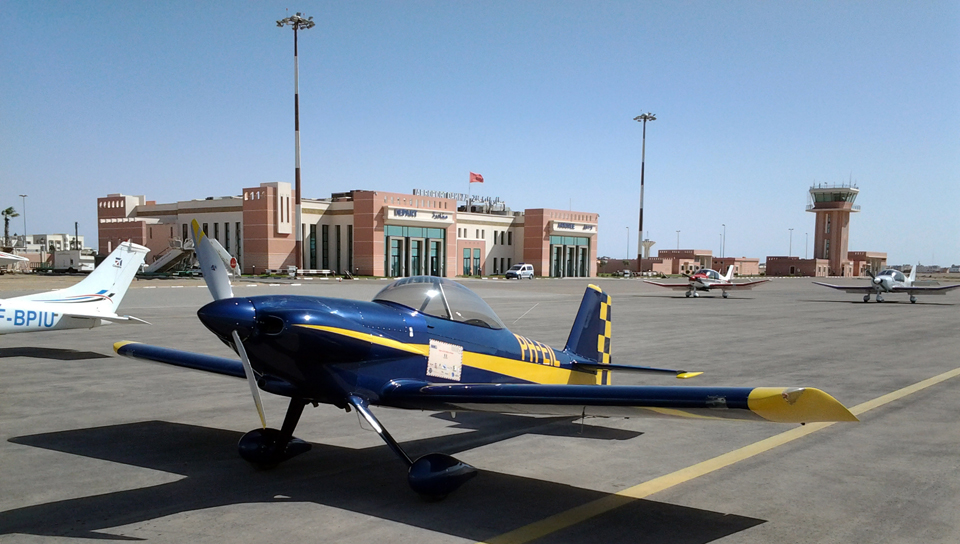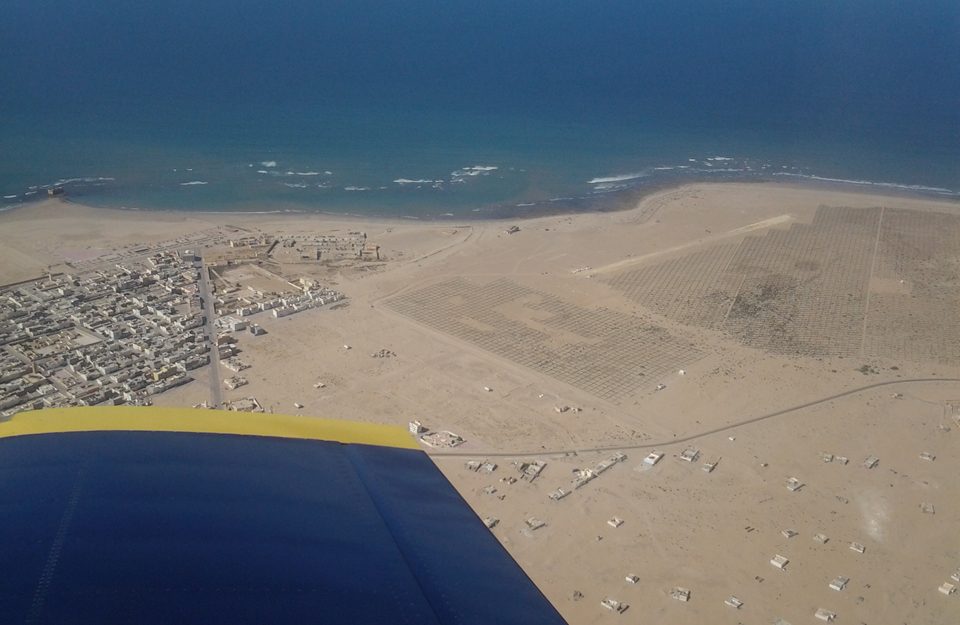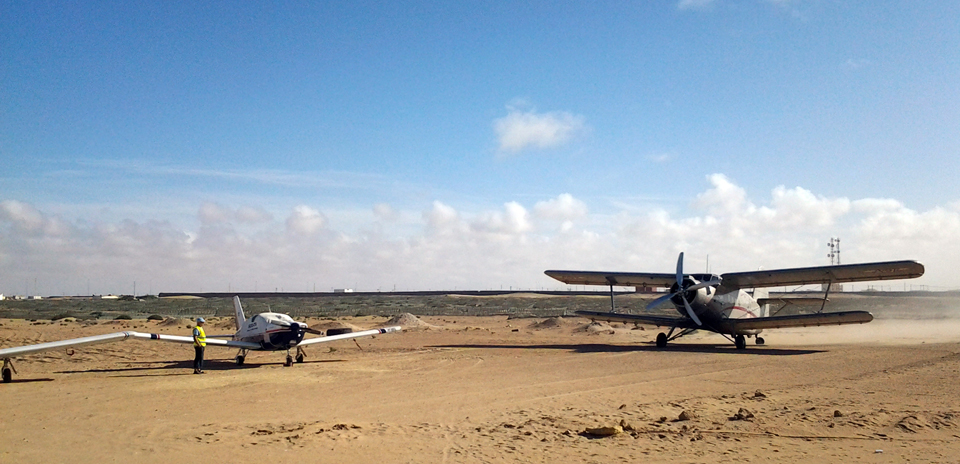Tracing the Route of Airmail Pioneers
By Terry Lutz, EAA 69308
April 21, 2016 - From the temperate climate of southern France, across the Mediterranean to the endless sands of the western Sahara, the airmail route envisioned by Pierre-Georges Latecoere in 1918 became reality in the minds of the world when it was described by the writer and pilot for Aeropostale Antoine de St Exupery in the book Wind, Sand, and Stars.
Each year, the cultural inheritance of the route from Toulouse to Dakar comes alive with aviation enthusiasts for the Raid Latecoere (raid translates to rally in English). A large group of light aircraft will fly from Toulouse in Southern France to Dakar, stopping at the Aerospostale stations that remain to preserve the memory of the days when airmail pilots braved the hostile North African environment in the air and on the ground.
Laurent Ripert, a French citizen and former airline pilot with plenty of experience flying in Africa, purchased an RV-4 that was built in the United States and exported to the Netherlands. The RV-4 opened the world of sport aviation to Ripert, and in 2014 he made the journey to AirVenture. He camped in the woods with thousands of EAAers, and became not only a member of the community, but a member of EAA.
Last October, Ripert flew his RV-4 in the Raid Afrique 2015. It was the first time a homebuilt airplane, flown by a member of EAA, had participated in the rally. Departing his home airfield of Coex, just to the south of Nantes, he flew to Toulouse to meet and brief with pilots of 22 other aircraft, and the crew who would follow them in a Russian AN-2 biplane, which would carry the gear of all the participants.
Day 1 flying was from Toulouse to Castellon, Spain, about 30nm north of Valencia, flying east of Perpignan and Barcelona to avoid weather. Day 2 was from Castellon to the general aviation airfield La Axarquia, near Malaga, along the Mediterranean coast. After a long delay clearing Spanish customs, they departed for Rabat in northern Morocco, crossing the Mediterranean just to the east of the Straits of Gibraltar.
Departing La Axarquia on Day 3, Ripert’s PTT switch failed, and while he could hear the other pilots on the Raid frequency, he couldn’t respond. It was fortunate that he could hear, because while monitoring Gibraltar Approach frequency, they were advised to divert to Tetouan, because the airspace around Tangiers was closed due to a visit by the King of Morocco.
With the PTT problem resolved, Ripert departed with the Raid on Day 4, flying from Tetouan to Essaouira at 1,500 feet, enduring high temperatures and strong thermals. Day 5 was from Essaouira to Cape Juby/Tarafaya, the outpost made famous by St Exupery. In the overhead picture, you can see the remains of the old Spanish fort, and the recently reopened sandy runway at Cape Juby. The mystery of Sahara and the outpost at Cape Juby was explained in a conference about the history of the region by Bernard Bacquie, a retired airline captain.
Day 6 was from Cape Juby/Tarafaya to Nouadhibou, Mauritania, with two fuel stops. Ripert flew at 500 feet about 1/2-mile offshore to get a slightly lower temperature and avoid the strong thermals over land. The Raid was hosted that evening by the French Embassy in Mauritania.
Day 7 was the final leg to Dakar, Senegal, passing the western most point of Africa at the Point des Almadies, with an incredible view of the Senegal River delta just beyond.
Ripert’s return route was via St. Louis, with a night stop in Agadir. In contrast to the low altitude view of the stark landscape of the Sahara, the Raid returned at 7,500 feet for tailwinds and a spectacular, but different view, including the Atlas Mountains to the east, and the Canary Islands to the west. The next stop was Rabat and a reception by the French Embassy there. Then it was back across the Mediterranean to his home in France.
During the Raid Afrique 2015, Ripert flew his RV-4 a total of 39 hours 14 minutes, which consumed 1,082 liters (about 285 gallons) of aviation fuel over 5,500nm of the same inhospitable terrain, heat, and wind endured by the pioneers of the early French airmail route flown by the pilots of Latecoere.
